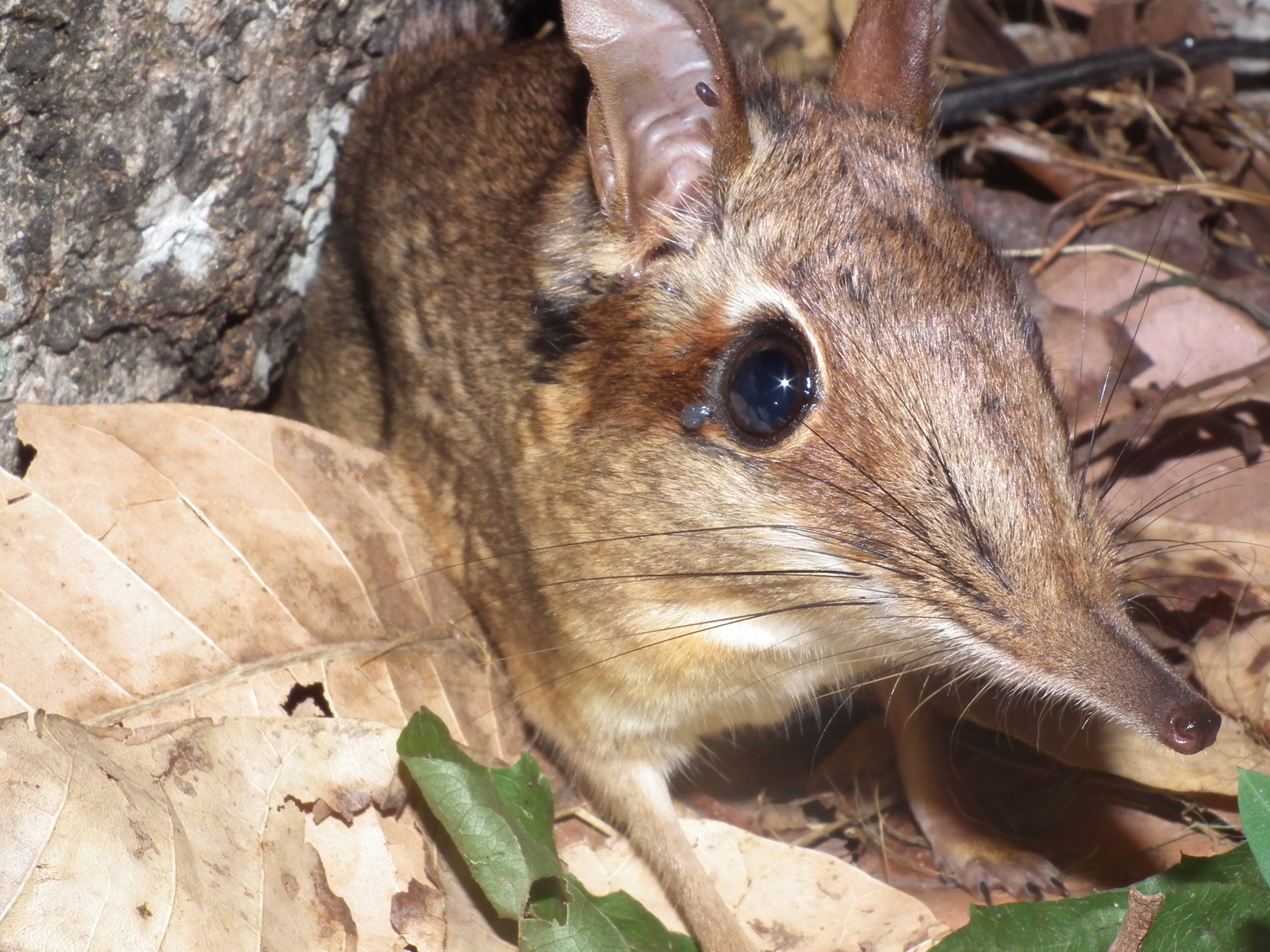News
WildCRU’s Peter Coals, normally focused on trade in lion bones, offers some reflections on his personal encounters with Sengis
Beneath the feet of immediately recognisable WildCRU African study subjects, such as lions, leopards, antelopes, and elephants, scurry altogether less familiar creatures. The small mammals are no less fascinating than their larger relatives and what they lack in stature they make up for in mystery. Since 2010 I have been interested in, and intermittently worked on, a relatively poorly understood mammalian family, the Macroscelididae, commonly known as the elephant-shrews or sengis. Although the smallest weigh little more than 50 g and the largest tip the scale at 500 g the sengis count the elephants among their closest living relatives in a taxonomic clade that also includes such unlikely fellows as aardvarks, hyraxes, dugongs and manatees. However in appearance and habit they might better be described a miniature cross between an anteater and an antelope.
My previous work on sengis has focused on expeditions to define geographic distributions and resolve taxonomic status within little-explored regions. Northern Mozambique has been a focal region. Having conducted training and capacity-building work with local researchers and students in Cabo-Delgado Province since 2010 current local students are turning to the study of the distribution of sengis in the region. Having surveyed potential sengi habitat under challenging logistical and financial constraints Mr Vasco Lino of the Universidade Lurio in Pemba reported new locations for two sengi species; the chequered sengi (Rhynchocyon cirnei cirnei) and the four-toed sengi (Petrodromus tetradactylus). These locations extend the confirmed distribution of both species within the Quirmbas National Park.
Increasing interest from local researchers is growing our knowledge of less well-studied species in remote regions. We believe it is vital to build local research capacity and encourage the study of biodiversity by researchers from the regions in which such species occur. We hope that interest in sengi biology continues to develop in Mozambique and anticipate locally led studies to be a great resource in further understanding the distribution, taxonomy and conservation of small mammals in Northern Mozambique.
Our report on recent records of sengis in the Quirimbas National Park, Mozambique is available open-access in the current issue of Afrotherian Conservation (http://www.afrotheria.net/PDFs/Afrotherian%20Conservation%2014%20-%20Sept%202018%20final.pdf) Page 38-43.
Reference:
Lino V.A. & Coals P.G.R. (2018) Notes on sengis (Macroscelididae) in the Ancuabe district Quirimbas National Park, Mozambique. Afrotherian conservation (14)38-43.






